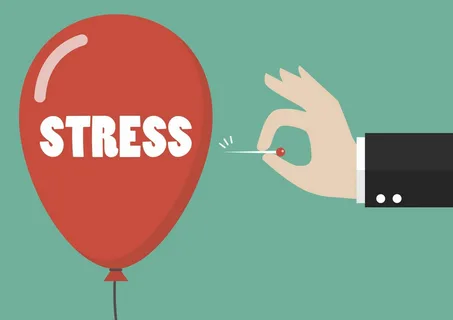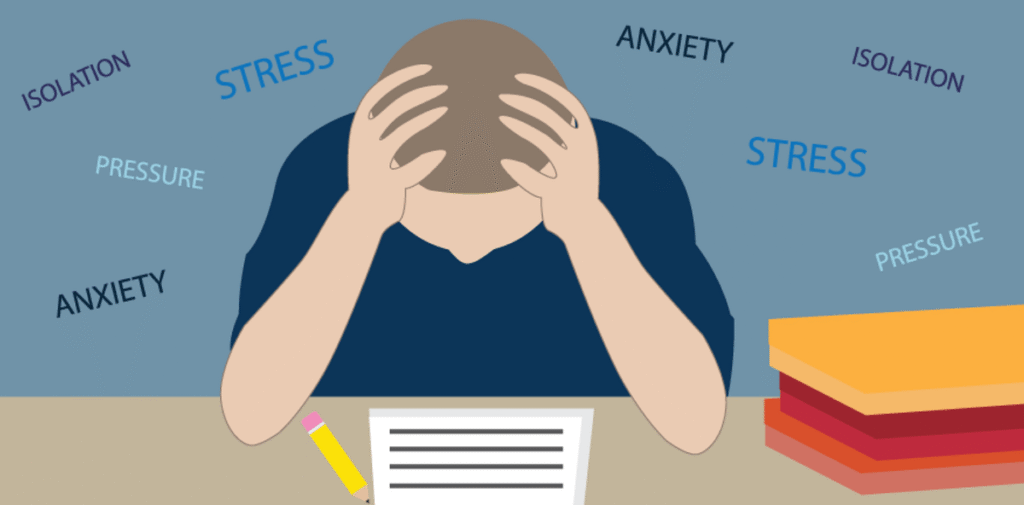The search for effective ways to manage stress and anxiety is a constant in modern life. While traditional methods like meditation and therapy are invaluable, technology is opening new doors for mental wellness. One of the most promising innovations is virtual reality (VR).
Once seen as purely for gaming and entertainment, VR is now a serious tool in mental healthcare. This technology offers immersive, controlled environments that can help people confront and manage their stress and anxiety in ways never before possible.
This article explores the connection between virtual reality and mental well-being. We will look at how stress and anxiety affect us, how VR therapy works, and what scientific evidence says about its effectiveness.
We’ll also consider the benefits and limitations of using VR for stress relief, providing a clear picture of this cutting-edge approach to mental health.
Understanding Stress and Anxiety’s Toll
Stress is the body’s reaction to any change that requires an adjustment or response. Anxiety is a feeling of fear, dread, and uneasiness. While everyone experiences these feelings occasionally, chronic stress and anxiety can have a significant negative impact on both mental and physical health.
When these conditions persist, they can lead to serious health problems, including:
Cardiovascular issues:
High blood pressure, heart disease, and increased risk of stroke.
Weakened immune system:
This makes you more susceptible to illnesses and infections.
Digestive problems:
Such as irritable bowel syndrome (IBS) and chronic heartburn.
Mental health disorders:
Including depression and panic disorders.
Sleep disturbances:
Insomnia and poor-quality sleep, which further worsen stress and anxiety.
The widespread nature of these issues highlights the urgent need for accessible and effective treatment solutions. Traditional therapies are effective, but they aren’t always available or suitable for everyone. This is where mental health innovation, like virtual reality therapy, comes into play.

How Virtual Reality Therapy Works?
Virtual reality therapy places a person in a computer-generated, three-dimensional environment that they can explore and interact with. By wearing a headset with a screen and headphones, the user is fully immersed, and their brain begins to accept the virtual world as real. This immersion is the key to its therapeutic power.
In a therapeutic setting, VR is used to create specific scenarios designed to help patients manage their mental health challenges. For stress and anxiety, this can take several forms.
Exposure Therapy in a Controlled Setting
One of the most powerful applications is Virtual Reality Exposure Therapy (VRET). This is particularly effective for anxiety disorders, phobias, and post-traumatic stress disorder (PTSD). VRET allows a therapist to gradually expose a patient to the source of their fear in a completely safe and controlled environment.
For someone with a fear of flying, a VR simulation can take them through the entire airport and flight experience without ever leaving the therapist’s office. For a veteran with PTSD, a simulation might recreate sensory aspects of a traumatic environment, allowing them to process the experience under professional guidance. This gradual exposure helps desensitize the individual to the trigger, reducing their anxiety response over time.
Relaxation and Mindfulness Environments
Another significant use of VR for stress relief is creating calming, meditative environments. Imagine being transported from a stressful office to a serene beach, a peaceful forest, or even the surface of another planet. These virtual escapes provide an immediate break from real-world stressors.
These programs often include guided meditation, deep breathing exercises, and biofeedback components. The user can see, hear, and sometimes even feel the peaceful setting, which helps quiet a racing mind and lower physiological stress responses like heart rate and blood pressure.
This approach makes mindfulness practices more engaging and easier to adopt for people who struggle with traditional meditation.
Science Backing VR for Stress and Anxiety
The idea of using VR for mental health isn’t just theoretical; a growing body of scientific research supports it. Numerous studies have demonstrated its effectiveness in reducing symptoms of stress and anxiety.
A landmark study found that VRET was highly effective in treating veterans with PTSD, with many participants showing significant reductions in their symptoms. The controlled and repeatable nature of the VR scenarios allowed therapists to tailor the treatment to each individual’s needs.
Research on generalized anxiety disorder (GAD) has also shown promising results. One study published in The Lancet Psychiatry explored a VR-based cognitive therapy. Participants who used the VR program reported a substantial decrease in anxiety and worry, with the positive effects lasting for months after the treatment ended.
For everyday stress, the evidence is just as compelling. A 2019 study had participants use a VR relaxation app after completing a stressful task. The results showed that just a few minutes in the virtual environment significantly lowered their stress levels and improved their mood compared to a control group.
The immersive nature of VR helps distract the brain from sources of worry, allowing the body’s relaxation response to take over.

Benefits and Limitations of VR in Mental Health
Like any therapeutic tool, virtual reality has a unique set of advantages and challenges. Understanding both is crucial for appreciating its role in the future of mental healthcare.
Key Benefits of VR Therapy
- Accessibility and Safety:
VR provides a safe space to confront fears and practice coping mechanisms. It can also bring therapy to individuals in remote areas or those with mobility issues.
- Engagement:
The immersive and interactive nature of VR can make therapy more engaging, increasing a patient’s motivation and commitment to the treatment plan.
- Control and Customization:
Therapists can precisely control the virtual environment, tailoring the intensity and type of exposure to match the patient’s progress.
- Anonymity:
For some, seeking mental health support can be difficult due to stigma. VR therapy can offer a greater sense of privacy and anonymity.
- Cost-Effectiveness:
Over time, as the technology becomes more widespread, VR therapy could become a more affordable alternative to some forms of traditional in-person care.
Potential Limitations and Concerns
- High-quality VR headsets and software can be expensive, creating a barrier to entry for some clinics and individuals.
- Some users experience “cybersickness,” which can include nausea, dizziness, and headaches. However, advancements in technology are reducing the frequency of these side effects.
- While some VR therapies involve a therapist, others are self-guided. This can lack the crucial human element and rapport that is central to traditional therapy.
- The field is still relatively new, and there is a need for standardized protocols and clinical validation to ensure all VR therapy programs are safe and effective.
Future of Virtual Reality in Mental Healthcare
The potential for VR in mental wellness is vast. As technology becomes more sophisticated, affordable, and accessible, its applications are likely to expand. We can expect to see more mental health innovation integrating VR with other technologies like artificial intelligence (AI) and biofeedback sensors.
Future VR systems could personalize therapeutic experiences in real-time based on a user’s heart rate, brain activity, and other physiological data. AI-driven virtual therapists could provide support and guidance 24/7, offering an accessible first line of defense for people experiencing stress.
VR is not a replacement for traditional therapy but rather a powerful tool that can augment it. It offers a new way to deliver proven therapeutic techniques, making them more engaging, effective, and accessible for a wider audience.
The journey of integrating virtual reality into mainstream mental healthcare is just beginning, but the science-backed insights we have so far point toward a very promising future. By embracing these technological advancements, we can create a more comprehensive and personalized approach to managing stress and anxiety.

